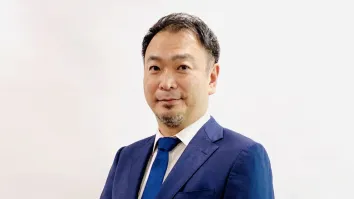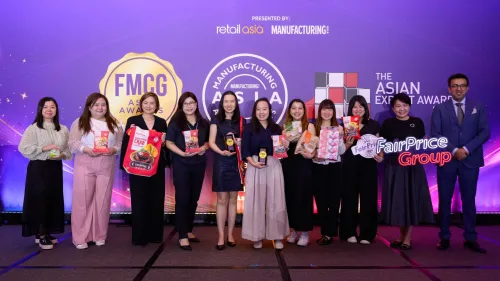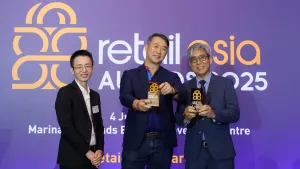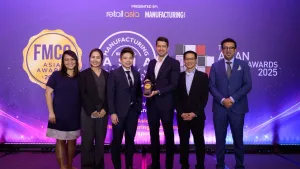Govind Shrikhande: The Customer Care Associate at Shoppers Stop
Govind Shrikhande, managing director of Shoppers Stop, has enjoyed a long career associated with textile and retail, and continues to derive much pleasure from a job that demands attention round-the-clock, 365 days a week. He shares his experiences with Shirish Nadkarni in Mumbai.
When Govind Shrikhande, a then 40-year-old textile technologist and management graduate, was invited to take over the reins of Shoppers Stop in April 2001, the department store chain had slipped into the red for the first time in its history, and showed a Rs240 million (US$4 million) loss on a sales turnover of Rs2 billion (US$33 million).
On the day he joined, a front-page story about the Raheja Group-owned Shoppers Stop in India’s leading business daily The Economic Times had a blaring headline: ‘Has India’s biggest retailer failed?’ A week later, the magazine Business Today ran a cover story on Shoppers Stop with an almost identical depressing headline.
“Of course, when I joined, I had known that the company was not performing well, but it is one thing to view it from the outside, and quite another to see it as an insider,” recalls Shrikhande. “I began wondering whether I had landed in a quagmire!”
Yet, at the end of his first year in charge as managing director, he managed to turn around the fortunes of Shoppers Stop, wiping out the red ink on the balance sheet, and showing a nominal profit of Rs200,000 for fiscal 2001-02.
From that point on, Shoppers Stop has never seen a problem of either excess stock or poor profitability. Over the 13 years of his association with the Rahejas, whose forte has been the construction business, Shrikhande has expanded the store chain to 67 outlets spread all over the country.
Along with 15 HyperCITY hypermarkets set up over the past seven years, and a chain of Crossword bookstores, the publicly listed (since 2005) company showed a retail sales turnover of Rs41.2 billion (US$687 million) in fiscal 2013-14, with a healthy operating profit of Rs1.54 billion (US$26 million).
Retail business sense
‘Textile’ and ‘retail’ are two words associated with Shrikhande’s career from the very beginning. If one were to ask him to trace his contact with the retail industry, it would be since his school days in Kolhapur, in Maharashtra state.
“My father owned a chain of cinema theatres in Kolhapur, Chikodi and Madhavnagar,” Shrikhande reminisces. “The business went through several ups and downs so to tide over the rough times, we – my elder brother, two sisters and I – started a business of selling educational textbooks and notebooks, from home for around a month, at the start of every academic year.”
Not that the business required any special selling skills as all the books were mandatory and every student had to buy them at the start of each academic year. But it instilled retail business sense in the young lad, and this remained in his blood for life. Throughout his working career, he remained connected with marketing and selling.
After completing his graduation in Textile Technology and then his post-graduation in Business Management, Shrikhande started his career in 1984 as a management trainee with the Mafatlal Group.
“The job involved market research, launching new products and merchandising,” says Shrikhande. “Mafatlal had a chain of stores, so my job included identifying fresh locations for stores, and servicing distributors and retailers.”
In 1986, he moved to pharma major Johnson & Johnson, but in an area involving textiles. He was tasked with sourcing fabric and fabric raw material for products like Band-Aid and crepe bandages. Then, in another swift job move, he joined Arvind Mills in 1987, and stayed with them for seven eventful years.
“It was a fantastic experience, working on the launch of denim fabric in India,” says Shrikhande. “We managed to expand the market dramatically over the next five years.
“Then I moved to Bangalore in 1992 to handle the launch of the Arrow brand, again within the group. It was also a great experience, but the job was Bangalore-based, whereas my family was in Mumbai, and not willing to move to Bangalore. So I preferred to return after 18 months there.”
Shrikhande worked at Mafatlal Stanrose for a brief spell of eight months, and then joined Bombay Dyeing, where he did a five-year stint between 1996 and 2001. “I worked at turning the Vivaldi brand around, and was then given charge of the entire Retail Division, which involved running nearly 600 stores nationwide,” he recalls.
Attraction of direct retail
Then the big break came. In 2001, he was interviewed for the job of managing director of Shoppers Stop, and accepted the offer despite realising that the company was making losses.
One important reason for joining was “my gut feeling that direct retail was likely to expand in India in a big way. I felt it would be a great way to get in touch with the direct customer, rather than through a distributor-retailer chain,” Shrikhande said.
At the time, there was no chain of department stores in India; just five or six stand-alone stores. Compared with other retailers, Shoppers Stop had the advantage of being the largest multi-brand department store.
“So far as Shoppers Stop is concerned, we have always decided what we want to buy, which brand will come in, which location we want to place it in, and so forth. Our model of operations is also completely different [from other department stores], though customers may not perceive it that way.”
The problem that Shrikhande encountered in his early days at the company was that it had over-extended itself on the debt front. The Rahejas had wanted to take Shoppers Stop public in 1999, and had decided they would invest heavily in IT, new stores and a top-quality management team.
“The ambitious plan got them mired in a number of problems,” recalls Shrikhande. “The implementation of the IT initiative went haywire and dragged on for three years, and several store openings kept getting delayed.
“The high-flying management team could not get its act together, mainly because most of them had come from a non-retail, non-textile, non-apparel background, and it was taking them a lot of time to understand textile retailing. The company lost its profitability.”
In addition, the owners of Shoppers Stop had had a falling out with Madura Coates of the Aditya Birla Group, which boasted three of the biggest apparel brands at that time – Louis Philippe, Van Heusen and Allen Solly. Madura Coates withdrew all its stock from Shoppers Stop stores.
Shrikhande was given three objectives by the Rahejas – reduce stock, restore profitability and bring back the best-selling brands to the stores. Madura Coates was coaxed back by the second half of the year, and stocks were brought down to normal levels after getting rid of 20 weeks’ excess stock in the process. And the company turned over a nominal profit.
“At the time I took over, we were at 100% bought-out stock; today, we are at only 40% bought-out and 60% non-bought-out – which is a completely de-risk model,” says Shrikhande. “It brought down our investment in stock substantially, and sharply reduced our requirement of working capital.”
It took Shoppers Stop nearly six years to move in this direction, but a start on the right track was made in the first year itself. And it was done with the same core team that had been with the company when Shrikhande took over.
“If you look around at retail in India, you will find that Shoppers Stop is the only one to have the same management team for the last 15 years,” says Shrikhande. “As many as 75% of the top people who were with the company before the turn of the millennium are still here.”
Were all the management concepts implemented at Shoppers Stop imbibed at Symbiosis Institute of Business Management (SIBM), or were they learnt on the job?
“Whenever I go back to SIBM to interact with students or give guest lectures, I mention that when I passed out in 1984, there was no retail industry in India, telecommunications were basic and there was no Internet,” says Shrikhande. “Therefore, all our modern concepts had to be developed on the job.”
Making the tough job easier
The Shoppers Stop chief claims that the easiest aspect of his job is the enjoyment he derives from it, and how it has become part of his own lifestyle.
“The moment you get into your mindset that it is a job that you are doing to earn a livelihood, the enjoyment would go out,” he says. “At the same time, the toughest aspect of the job is that retail is a 24x7 job, 365 days a week. On several occasions, things can happen that are beyond your control, and you have to move into damage-control mode very quickly.”
Shrikhande quotes an example of an incident that had him tearing out his hair. A customer at one of the Shoppers Stop stores in Latur, interior Maharashtra, had given the store a cheque for Rs200,000 (US$3,330) that bounced. The company duly went to court, and after two months, won the case.
“We agreed to settle the matter by accepting the payment in as many installments as the customer could manage; the court suggested three installments,” says Shrikhande.
“On the night of the judgment, the gentleman committed suicide. We were seriously worried about the negative publicity that the incident could have netted us – people may have perceived that we had put undue pressure on the man. Then we found that ours was only a small amount; he owed the market over Rs5 million. And we could breathe a sigh of relief!”
Taking care of customers
In order to produce a sense of belonging in the employees of Shoppers Stop, Shrikhande has introduced a system where every employee that comes into contact with customers is known as a ‘Customer Care Associate’. The term percolates down from the very top; Shrikhande’s own designation on his visiting card reads ‘Customer Care Associate and Managing Director’.
The company has also produced a corporate anthem – written by well-known lyricist Gulzar, set to music by Ram Sampat and sung by Sonu Nigam – that is played over the public address system in all Shoppers Stop back offices, stores and warehouses every day at 10.45am.
Says Shrikhande: “We are all dedicated to the service and care of the customer. From the anthem, we derive inspiration every morning, and convince ourselves that each one of us would give only the best possible service to customers. It is our aim that all 10,000 of our Customer Care Associates will give the same top level of care and service to our customer.”



















 Advertise
Advertise







